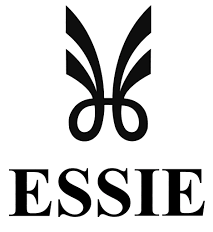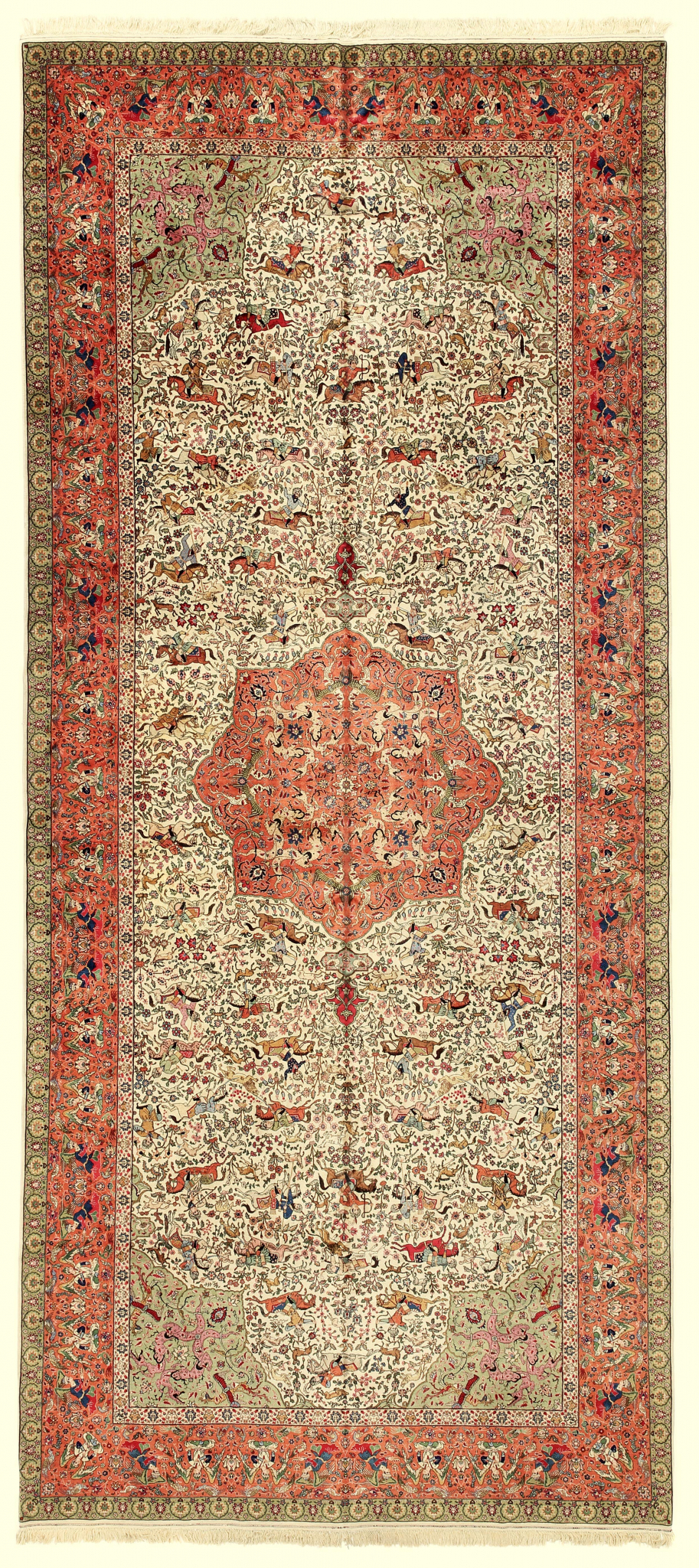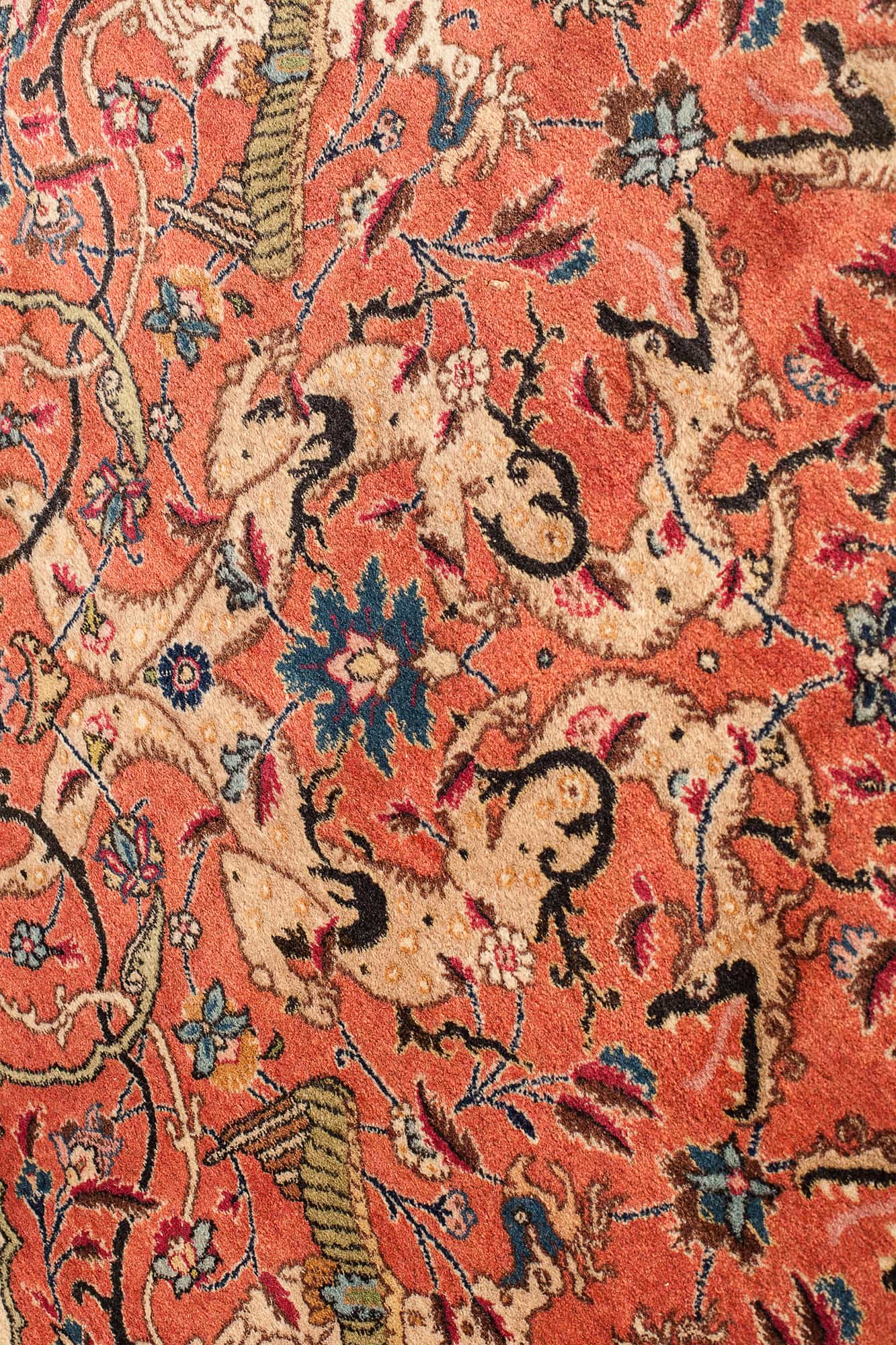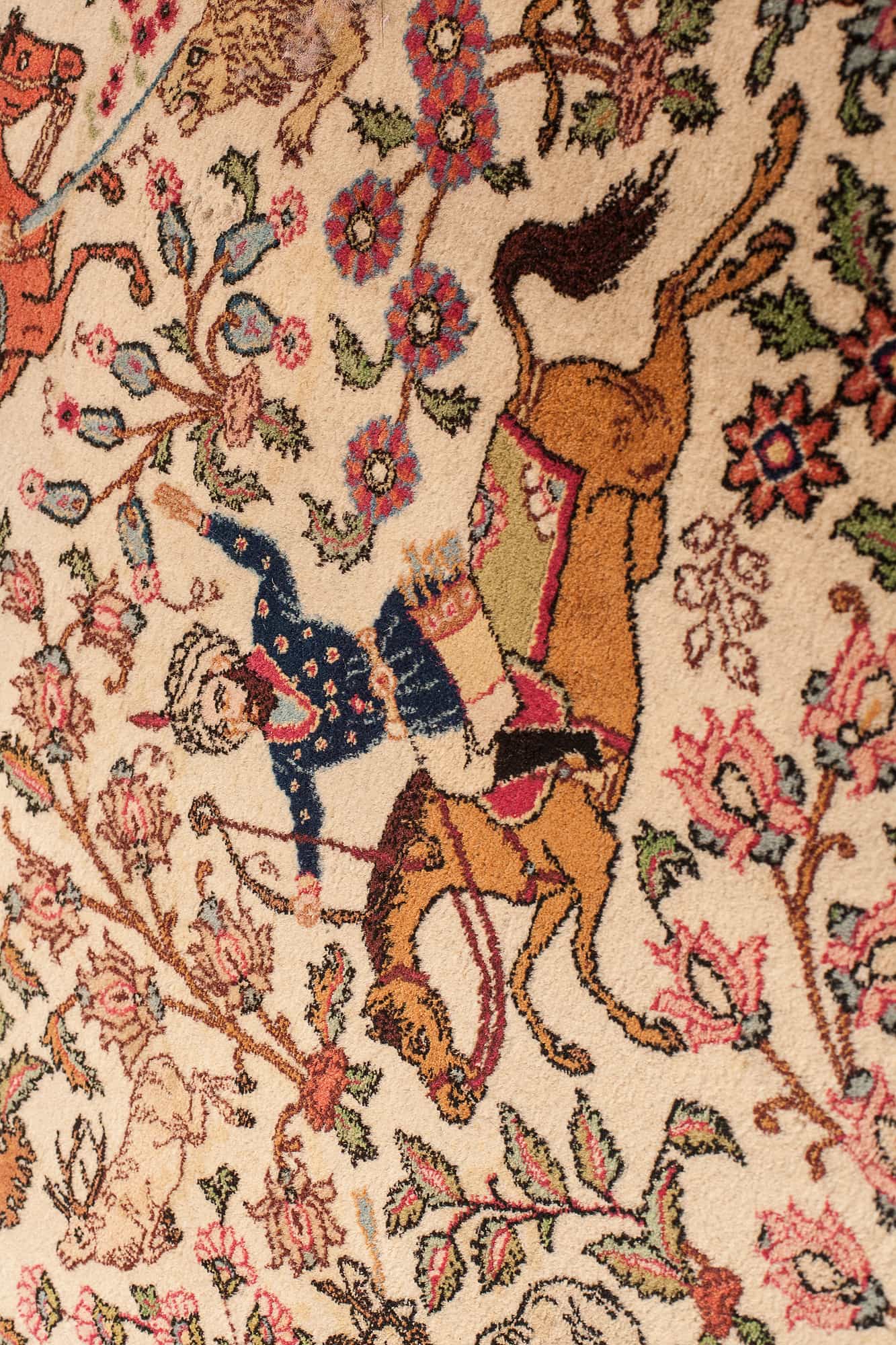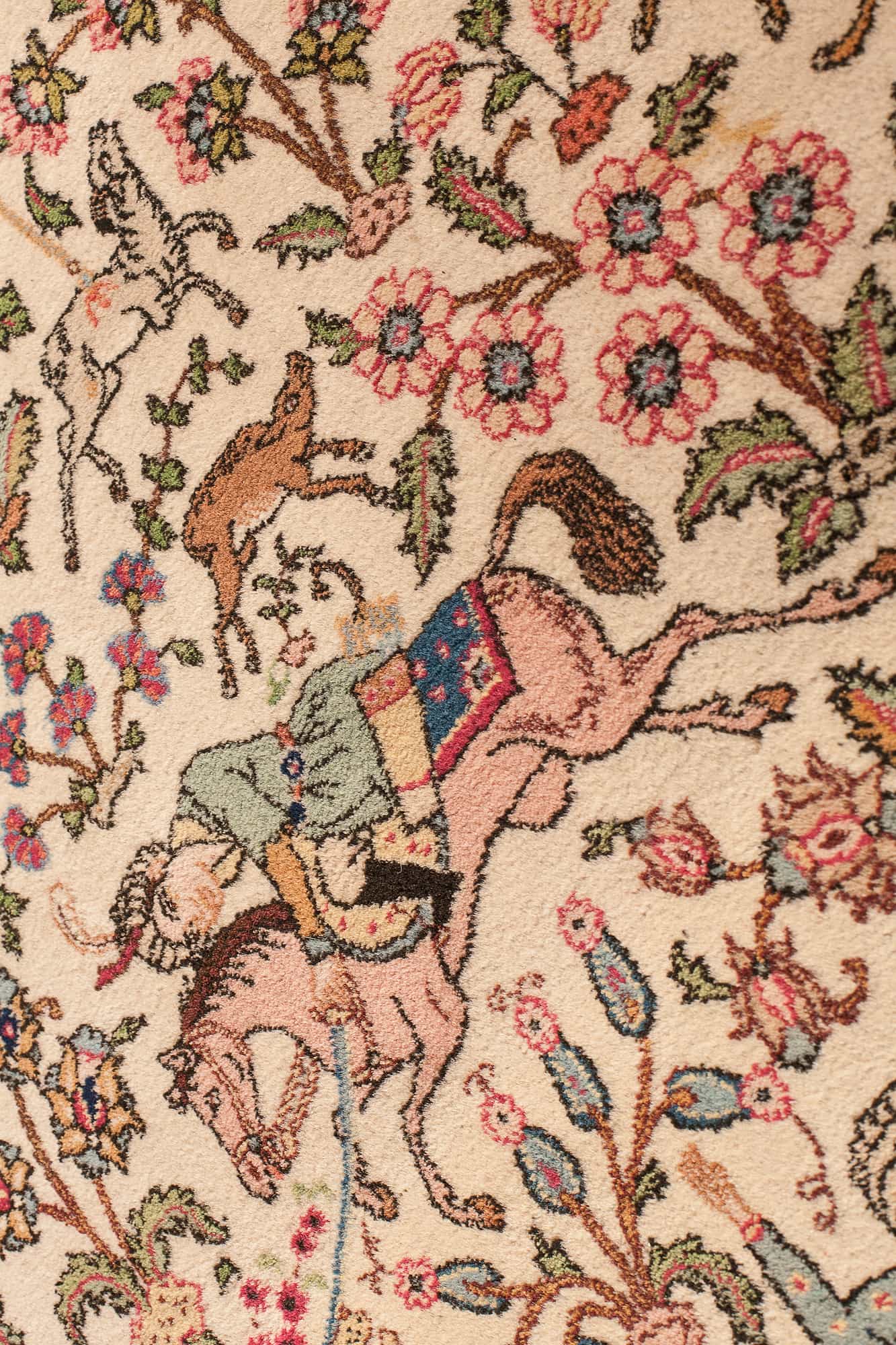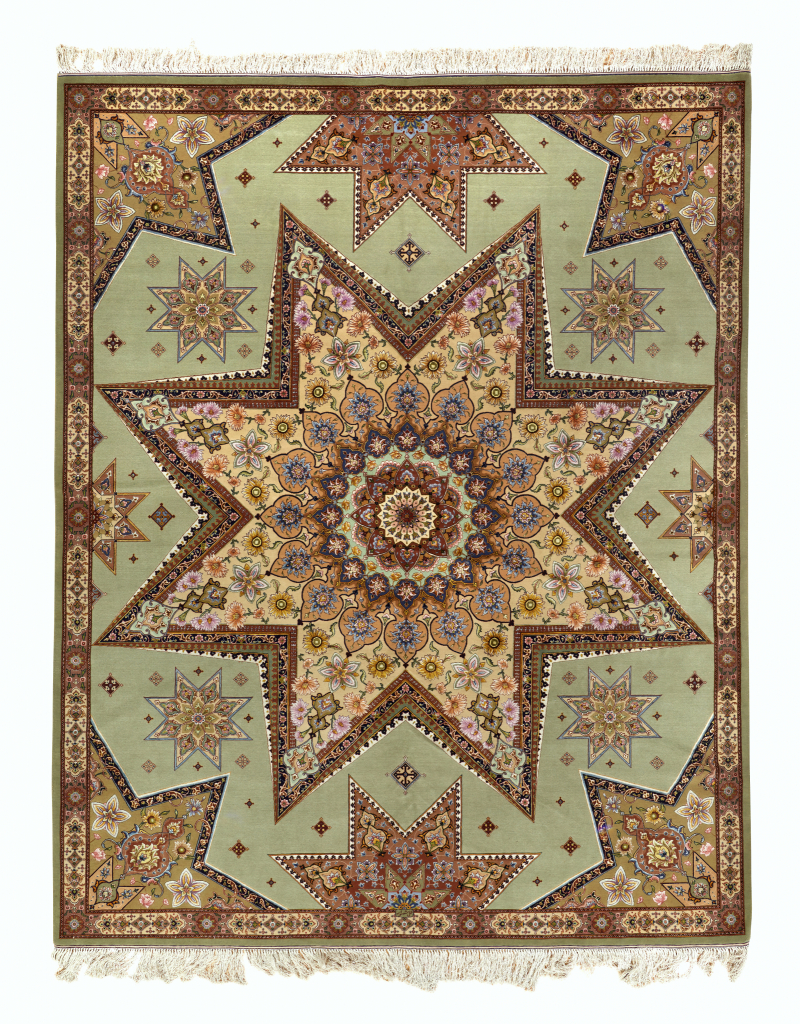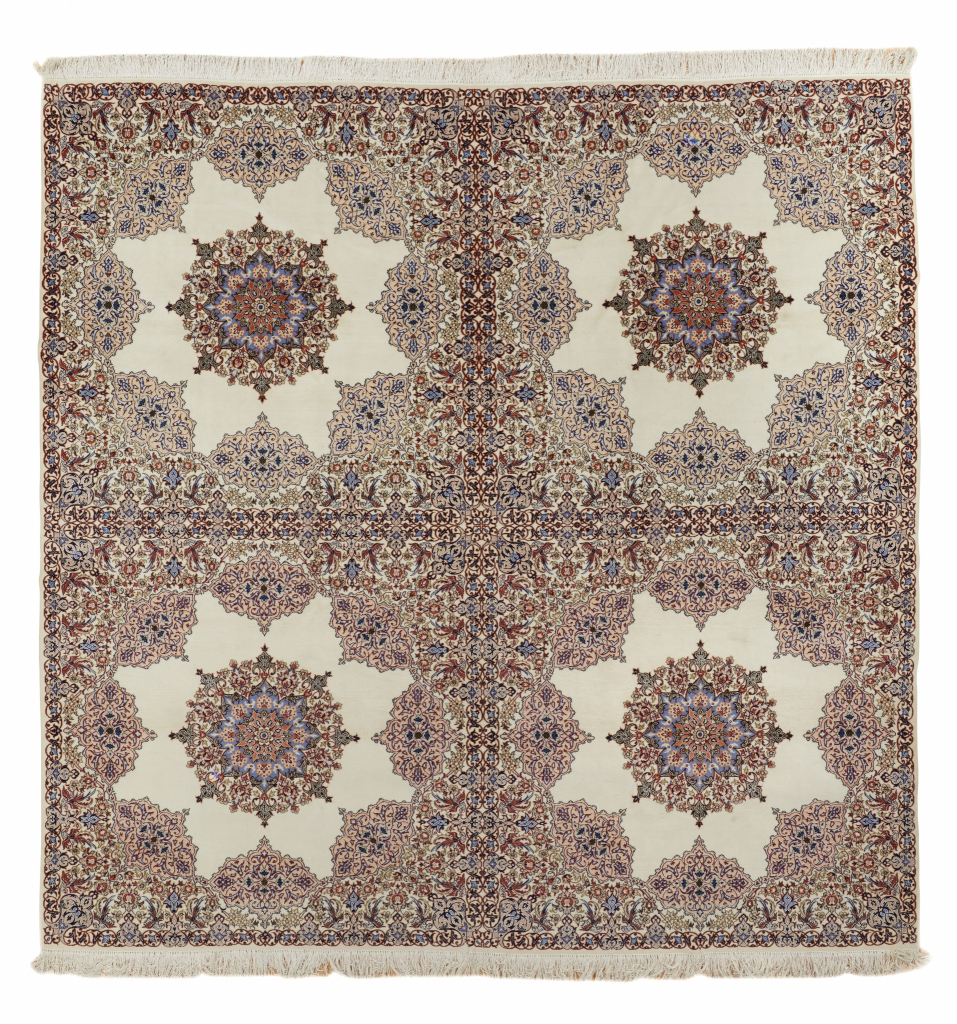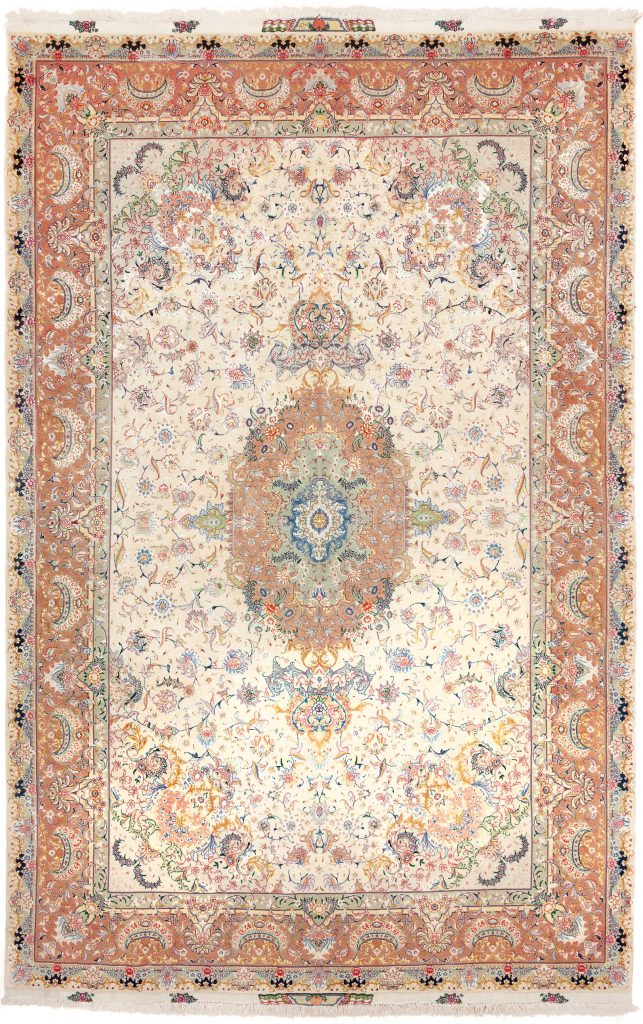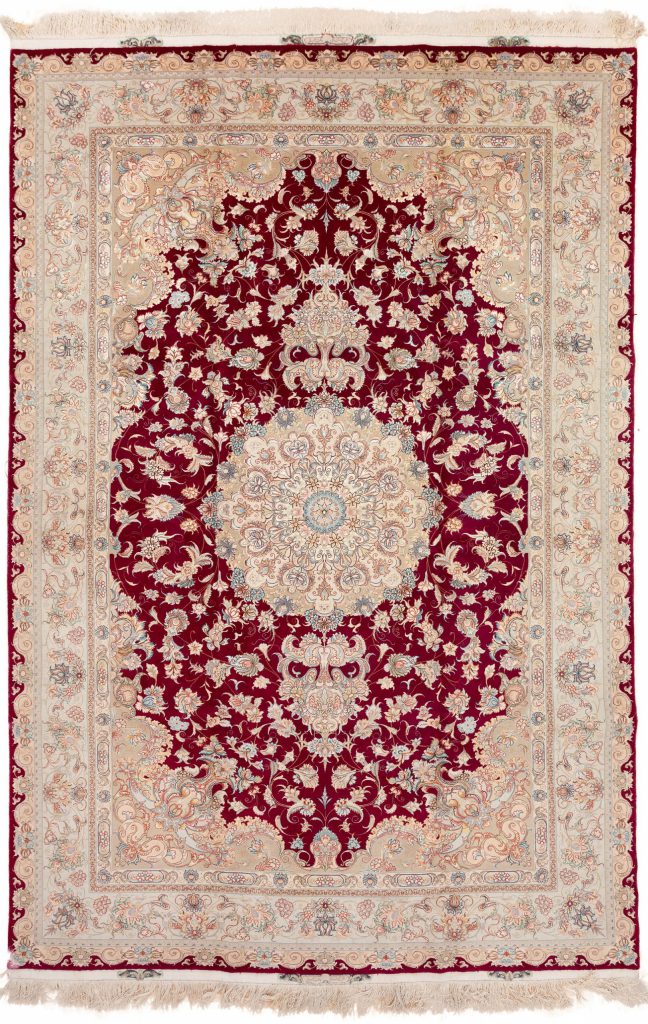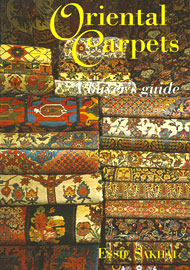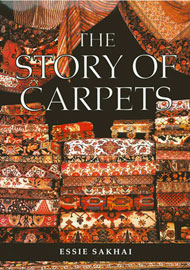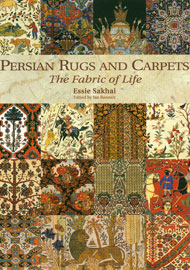Persian Tabriz Carpet – Fine Signed Antique – Extra-Large Oversize Gallery
Rug #1001Persian Tabriz Carpet – Fine Signed Antique – Extra-Large Oversize Gallery – Medallion design Kork Wool (Cashmere) with Silk threads
A Magnificent Persian Tabriz “Medallion and Animal” Hunting Carpet, North West Persia, Kork Wool (Cashmere), and Silk on Cotton Foundation,
Early 20th Century.
The ivory field with a central salmon pink lobed and pointed medallion enclosing four pairs of facing writhing dragons, supported by pairs of facing Simurgh with spread wings, amongst palmette adorned vines, supported by hunts men on horseback in pursuit of prey amongst flowering plants and vinery, ochre quarter medallion spandrels, with dragons and Simurgh within a salmon pink border enclosing continuous kneeling ‘Angels’ amongst flowering vines, an arcaded outer guard border enclosing continuous palmettes.
The city of Tabriz in North West Persia, was the earliest Capital of the Safavid Dynasty, ( 1502 – 1736 ), and as such is most likely to have been the centre of carpet production longer than any other significant centre in Persia. Regarded as the ‘Golden Age ‘ of carpet making, the Safavid Shah’s were avid patrons of the arts in all subjects, and actively encouraged pursuit of excellence in craftsmanship and creativity.
Tabriz led the way, and as a result of this long tradition, Persian Tabriz carpets, influenced by varying cultures over time display a huge repertoire of varying designs from ‘medallion’ to overall repeat patterns.
The range of colours is seemingly endless, and the combination of colours used is always carefully considered to create the most harmonic and decorative end product. From these earlier times, these established traditions have continued through to the present day, and many exceptional Persian Tabriz carpets have been made closely based on the ‘original’ Safavid carpet designs.
This magnificent Persian Tabriz carpet is based on a design classified as ‘Medallion and Animal’ pattern seen in a small group of recognisable carpets dating to the late 16th Century. They are often referred to as ‘Sanguszko’ carpets so named after an example belonging to Prince Roman Sanguszko which is said to have been acquired as booty at the battle of Chocim in the Polish Commonwealth, 1621, which is exhibited in the Metropolitan Museum of Art, New York, attributed to Kerman in South East Persia. A carpet also considered from this group is in the Victoria and Albert Museum, London. This version displays a highly complex central star medallion of large scale displaying a symmetrical pattern incorporating mythical creatures including pairs of dragons and Simurgh, ( Mythical Persian birds related to the Phoenix ), arranged in a flowing pattern supported by flowering vines, in an extensive range of complementary colours. The main ivory ground field is decorated with a mass of highly detailed motifs, beautifully drawn, depicting a hunting scene with hunters on horseback in pursuit of prey amongst delicately drawn flowering vines. The spandrels are presented in a pale ochre colour formed as a quarter medallion displaying the same pattern as seen in the central medallion. Normally the spandrels are presented in a repeated colour scheme to the Central medallion, however, brilliantly and courageously an alternative yet complementary range of colours has been used.
Pictorial hunting scenes start to appear in Persian Carpets from around 1880 onwards, and in this case replaces the combative animals seen in the safavid ‘Medallion and Animal’ carpets’. The border colour as is often the case is of the same tone as presented in the central medallion. The mythical theme is continued by the inclusion of beautifully drawn continuous kneeling winged ‘Angels’ and Simurgh all drawn in a consistent scale in line with all the other pattern motifs and details, presented in a fabulous range of varied colours. The minor outer border pattern is treated in the same meticulous way as any other area of the carpet, presented in the same colour as the spandrels. The size of this Persian Tabriz carpet is consistent with those often made as Court carpets during the 16th and 17th Centuries.
Overall this Persian Tabriz carpet is remarkable both technically and visually, the creation of an outstanding work of art, reminiscent of the magnificent Persian Tabriz carpets made during the Classical ‘Golden Age’ of Persian Carpet production.
Persian Tabriz Carpet – Fine Signed Antique – Extra-Large Oversize Gallery. This piece was handwoven in Tabriz , Iran. For further information please contact us and our team will be pleased to assist you. All pieces in the collection are under the auspices of Essie Sakhai, one of the world’s foremost experts and collectors of fine handmade Persian rugs and carpets.

Delivery
Delivery
Enjoy Complimentary Express Delivery at Checkout
Free express next-day delivery on all UK orders.
Free express delivery on all international orders above £2,000.
Estimated Delivery Times
Please allow between 1-3 days for UK, Europe and United States destinations and 5-7 days for Far East, South America, Middle East destinations.
Please note that orders placed after 12pm (UK time), on the weekend, or during holidays will be processed on the following business day. You will be provided with a shipping tracking number once your order has been shipped.
Collection from our Mayfair London showrooms
In-store collection will be ready within 1 business day. To collect in-store you will be required to show confirmation e-mail, official photo ID (passport or driving license) and the payment card used for the order. If someone else is collecting on your behalf, please make sure they bring a letter of authorisation that permits this person to collect on your behalf, official photo ID of the purchaser and of the person collecting and confirmation e-mail.

Exchanges
Exchanges
Essie Carpets offers clients a lifetime exchange service on any items purchased from us should you wish to change your carpets at any time in the future, subject to the item being in good condition; this can be particularly useful when redecorating your home, or when an upgrade in type or quality is desired.

Payment
Payment
Payments are accepted via credit card or debit card with a valid billing and shipping address*. Accepted credit cards are Visa, American Express, and Mastercard. When placing an order, your billing address must correspond to the address of your credit card, or we will not be able to process your order.
Bank Transfers are also accepted; in order to pay by Bank Transfer, please contact our Client Services via telephone at +44 20 7493 7766 or e-mail at sales@essiecarpets.com.
All transactions are secured. The Essie Carpets website is provided with an SSL encryption system to protect personal and payment data.
Similar Carpets
-
 Fine Unique Tabriz Rug - Signed 250 x 197 cm
Fine Unique Tabriz Rug - Signed 250 x 197 cmRug #7006 Fine Unique Tabriz Rug - Signed POA
Fine Unique Tabriz Rug – Signed
-
 Fine Rare Persian Esfahan Rug - Square 244 x 244 cm
Fine Rare Persian Esfahan Rug - Square 244 x 244 cmRug #7004 Fine Rare Persian Esfahan Rug - Square POA
Fine Rare Persian Esfahan Rug – Square
-
 Very Fine Extra Large Tabriz Carpet 512 x 412 cm
Very Fine Extra Large Tabriz Carpet 512 x 412 cmRug #5066 Very Fine Extra Large Tabriz Carpet POA
Very Fine Extra Large Tabriz Carpet
-
 Exceptionally Fine Extra Large Tabriz Carpet 815 x 500 cm
Exceptionally Fine Extra Large Tabriz Carpet 815 x 500 cmRug #5054 Exceptionally Fine Extra Large Tabriz Carpet POA
Exceptionally Fine Extra Large Tabriz Carpet
-
 Exquisite Very Fine Persian Tabriz Carpet - Signed 305 x 200 cm
Exquisite Very Fine Persian Tabriz Carpet - Signed 305 x 200 cmRug #2675 Exquisite Very Fine Persian Tabriz Carpet - Signed POA
Exquisite Very Fine Persian Tabriz Carpet – Signed
-
 Exquisite Very Fine Tabriz Carpet - Signed 300 x 200 cm
Exquisite Very Fine Tabriz Carpet - Signed 300 x 200 cmRug #2660 Exquisite Very Fine Tabriz Carpet - Signed POA
Exquisite Very Fine Tabriz Carpet – Signed
